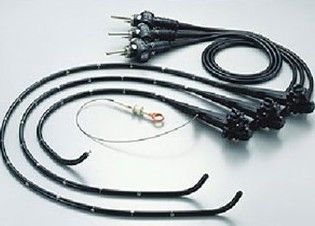
Technological advancements, acceptance of MIS drive endoscopy market
The total endoscopy market has grown in recent years due to increases in the aging and chronically ill population, advancements in endoscopic technologies and the widespread acceptance of minimally invasive surgery (MIS).
Sun May 01 2011
The total endoscopy market has grown in recent years due to increases in the aging and chronically ill population, advancements in endoscopic technologies and the widespread acceptance of minimally invasive surgery (MIS). In comparison to traditional open surgeries, the use of endoscopic procedures encourages a reduction in costs due to the elimination of sedation, monitoring and length-of-stay costs, making this a key driver in this sector.
The global endoscope market was worth $2,391,000 in 2009 and is expected to reach $3,524,000 over the next seven years. Four major players hold 75 percent of the total global endoscope market. Olympus is the clear market leader, with 47 percent of the market share. Other principal players include Fujinon Corporation (10 percent market share), Karl Storz and Hoya (each with 9 percent market share).
Rigid vs. flexible endoscopes
Endoscopes may be rigid or flexible. Rigid endoscopes consist of a solid metal tube into which light is delivered using fiber optic bundles. The rigidity of these endoscopes may be a limitation, but they provide the highest resolution images. By contrast, flexible endoscopes offer greater convenience, but they can be easy to break and expensive to repair.
Flexible endoscopes form the largest category in the endoscopes market, contributing more than 74 percent of the total market value. The flexible endoscopes market is growing at a rate of 6 percent per year and was worth $1,754,000 in 2009.
Rigid endoscopes are a potentially exciting clinical area in which both new and existing manufacturers are competing hard for market share. Although this market is seen as becoming saturated, the drive to develop new technologies and new procedures continues. “Now, as advancing technologies and innovative techniques are being developed, laparoscopy is poised to move into a new generation of greater surgeon control and even less invasive procedures,” says Eric Coolidge, senior product manager for Olympus Medical Systems.
Innovation in rigid endoscopy
Rigid endoscopy is considered a mature market, with established clinical areas such as laparoscopy, urology and arthroscopy having reached a state of steady growth. However, even within these established areas, new applications for rigid endoscopes are being found. For example, companies such as Atlantech and Olympus have successfully built a niche market in rigid endoscopes with a deflectable-tipped endoscope that allows a wide field of vision that allow an awkward area, such as the shoulder or wrist, to be observed in its entirety with a single optic. “Incorporation of this deflectable tip on the telescope provides surgeons with a larger field of view, helps them avoid situations where the tips of the instruments collide and delivers the maneuverability and access that are required for single port laparoscopy,” Coolidge says.
As well as the identification of additional uses in established areas, the development of new clinical areas promises to take rigid endoscopy to a new level. Neuroendoscopy is one exciting area of growth, with increases in the number of neuroendoscopy procedures currently believed to be in the region of 7-15 percent a year.
Examples of neuroendoscopic procedures that have become possible through the use of rigid endoscopes include treatment of hydrocephalus, removal of tumors and cysts, evacuation of subdural hematomas, placement of shunt catheters, treatment of aneurysms, treatment of sympathetic mediated pain and endoscopic procedures on the central nervous system of children and infants.
Market drivers
High adoption rates of new but expensive technologies such as HD cameras, narrow band imaging and confocal microendoscopy are driving the global endoscopes market, including the rigid endoscope market.
Key factors for success in this market include competitive pricing, effective customer service, including instrument repair and replacement, instrument loans, maintenance contracts, training and technical support, and product quality and durability, which is particularly important following the introduction of compulsory autoclaving for longer times. In addition, successful companies tend to offer a product range that spans different clinical areas, including a wide range of accessories that are compatible with pre-existing equipment.
Market opportunities
Neuroendoscopy is currently the fastest growing market for rigid endoscopes. Urology and gynecology are large, well established markets where new technologies may increase revenue growth through price increases. Several new techniques are being developed within the pediatric ENT area, while arthroscopy is growing with the inclusion of difficult areas such as the shoulder and ankle. By contrast, laparoscopy is a large market where growth has slowed as the market has matured.
Coolidge expects continued growth in both the rigid and flexible endoscopy markets. “We will continue to see elevated benchmarks and best practices not only for patient care and throughput but for interconnectivity between electronic medical records, lab integration, etc. due to the emerging changes in health care,” Coolidge says. “Additionally, Olympus anticipates an increased interest in minimally invasive procedures utilizing flexible endoscopy. Emerging transdisciplinary therapy such as Natural Orifice Translumenal Endoscopic Surgery (NOTES) is an approach that could ultimately represent a major paradigm shift in minimally invasive therapy and patient care.”
Article found in the May issue of OR Today.
